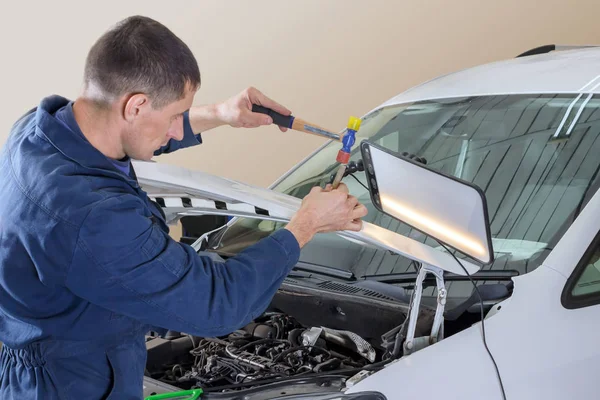Expert Tips For Classic Car Dent Repair: Restoring Vintage Charm With Precision Work
Restoring classic cars involves more than just fixing mechanical parts; it's also about preserving the aesthetic charm that defines each vintage model. Dent repair is one of the most challenging yet crucial aspects of this restoration process. With expert techniques and a meticulous approach, dent repair can help return a classic car to its former glory.
Understanding the Unique Challenges of Classic Car Dent Repair
Classic cars have distinct characteristics that set them apart from modern vehicles, making dent repair particularly intricate. Here’s what makes the process unique:
Older Metal Compositions and Thickness
Classic cars are typically constructed from thicker, heavier metals, such as steel, which present unique challenges for dent repair. These vintage materials are less pliable than modern alloys, necessitating specialized tools and techniques. The added thickness requires careful manipulation to avoid damaging the metal. Successfully working with these compositions helps maintain the car's authenticity and structural integrity.
Maintaining Authenticity
Maintaining authenticity in classic car dent repair involves preserving the vehicle’s original character, including its paint, contours, and finish. Repairs must seamlessly blend with the car’s vintage look, avoiding noticeable changes that could diminish its historical value. Attention to these details keeps the car’s appearance true to its era. This approach enhances both aesthetic appeal and collector value.
Essential Tools and Techniques for Classic Car Dent Repair
Restoring a classic car’s body demands precision and the right tools. Here are some of the most effective techniques:

Paintless Dent Repair (PDR)
Paintless Dent Repair (PDR) is an effective technique for restoring minor dents without affecting the original paint. This method involves accessing the backside of the panel and gently massaging the dent out using specialized tools. PDR preserves the vehicle's finish, making it an ideal choice for classic cars where maintaining authenticity is crucial. This technique is efficient and minimizes the need for costly repainting.
Stud Welder Gun for Severe Dents
A stud welder gun is an invaluable tool for repairing severe dents in classic cars. It attaches small metal studs to the dented area, allowing for controlled pulling using a slide hammer. This technique effectively restores the metal’s shape without compromising the surrounding area. Utilizing a stud welder ensures a precise repair, maintaining the vehicle’s original integrity and appearance. For detailed information about classic car dent repair, click here.
Metal Finishing Techniques
Metal finishing techniques are essential for achieving a smooth, seamless repair after dent removal in classic cars. Methods such as planishing involve carefully shaping the metal using hammers and dollies to refine its contours. These techniques ensure that the repaired area matches the car's original lines and finish. Proper metal finishing enhances the overall aesthetic and prepares the surface for painting, if needed.
Steps to Execute a Classic Car Dent Repair
To achieve high-quality results, each step in the repair process requires careful attention to detail. Here’s a step-by-step approach to classic car dent repair:
- Assessing the Dent Damage: Start by assessing the size, depth, and location of the dent. This will determine the type of tools and techniques needed. Consider factors like paint condition and the thickness of the metal in that area.
- Cleaning and Prepping the Surface: Clean the area thoroughly to remove any debris, dust, or residue. A clean surface helps you see the dent more clearly and prevents further scratches or contamination during the repair process.
- Using Heat for Stubborn Dents: Some vintage metals, especially those with thicker compositions, respond better to repairs when slightly heated. Using a heat gun can make the metal more malleable, allowing you to reshape it more easily without cracking or breaking.
- Applying Pressure from Behind: For small to medium-sized dents, gently push the metal out from behind with a specialized tool. Start from the outer edge and work toward the center, using controlled pressure to avoid creating new dents or high spots.
- Finishing Touches: Once the dent is removed, use fine-grit sandpaper to smooth out the repaired area, especially if you had to repaint. Follow up with polishing and buffing to ensure the surface is flawless.

Common Mistakes to Avoid in Classic Car Dent Repair
Repairing dents in classic cars requires precision, but some common errors can detract from the final result. Here’s what to avoid:
Skipping Paint Match and Finish
Skipping paint match and finish can significantly detract from the quality of classic car repairs. An incorrect color or texture can make the repaired area stand out awkwardly, compromising the vehicle's aesthetic appeal. It’s crucial to ensure the paint blends seamlessly with the original finish for a cohesive look. Attention to detail in paint matching not only enhances the car's beauty but also preserves its historical value.
Overworking the Metal
Overworking the metal during dent repair can lead to unintended consequences, such as warping or creating high spots. Excessive force can stretch the metal, making it difficult to restore to its original shape. This mistake often results in a visually uneven surface, compromising the car's authenticity. Careful, controlled techniques are essential to achieve a smooth finish without damaging the vintage materials.
Final Tips for Preserving Classic Car Beauty After Dent Repair
After a successful dent repair, protecting the repaired area is essential to maintain the vehicle’s restored charm.
- Apply a Quality Wax: Waxing adds an extra layer of protection and enhances the shine, preserving the newly restored surface.
- Regular Maintenance: Schedule periodic maintenance to catch any new dents or imperfections early, as minor damage can be easier to fix.
By using these expert tips, you can repair dents with precision, restoring the elegance of a classic car while preserving its historical charm.

